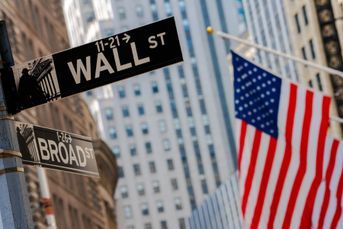El-Erian to investors: ‘Keep your seatbelts on and tight’
Mohamed A. El-Erian, whose firm runs the world’s biggest mutual fund, says stock investors should brace for higher…
Mohamed A. El-Erian, whose firm runs the world’s biggest mutual fund, says stock investors should brace for higher volatility after a report showed U.S. employers hired fewer workers than economists projected.
The Labor Department said today that payrolls increased by 431,000 in May, trailing the median economist forecast in a Bloomberg News survey that called for a gain of 536,000. Private employers added 41,000 positions, 139,000 less than estimated.
“Investors should keep their seat belts on and tight,” El- Erian, 51, the chief executive officer of Pacific Investment Management Co., wrote in an e-mail to Bloomberg News. “The disappointing jobs report is further evidence that drivers of self-sustaining private consumption growth are facing structural problems that result in slow income growth, reduced credit availability and lower ability to monetize wealth.”
El-Erian forecasts an extended period of below-average economic growth, more regulation and lower consumption in what Pimco, manager of $1.1 trillion in Newport Beach, California, calls the “new normal.” The U.S. economy faces a “protracted post-crisis resetting” as high unemployment persists, he wrote in a Bloomberg News column in February. The jobless rate fell to 9.7 percent in May from 9.9 percent in April.
The Standard & Poor’s 500 Index dropped 1.3 percent at 10:36 a.m. in New York and Treasuries surged amid speculation a slowing labor market will restrain consumer spending, the biggest part of the economy. The VIX, as the Chicago Board Options Exchange Volatility Index is known, surged 8.2 percent to 31.86. The measure, which tends to rise when investors are paying more for protection from losses in the S&P 500, surpassed 40 in May for the first time in almost 13 months.
Profits for companies in the S&P 500 are forecast to rise 17 percent to a combined $81.34 a share in 2010, according to estimates from more than 2,000 analysts tracked by Bloomberg. That implies a price-earnings ratio of 13.4, compared with the average multiple using reported results of 20.8 since April 1991, according to data compiled by Bloomberg.
“Stock valuations are starting to reflect the on-the- ground realities of mounting issues that limit the strength and durability of the cyclical bounce,” El-Erian wrote. “Today’s numbers suggest that the corporate sector as a whole cannot rely on strong-top-line revenue growth to drive profitability.”
Learn more about reprints and licensing for this article.








